I think some motifs look more technical in black and white .......
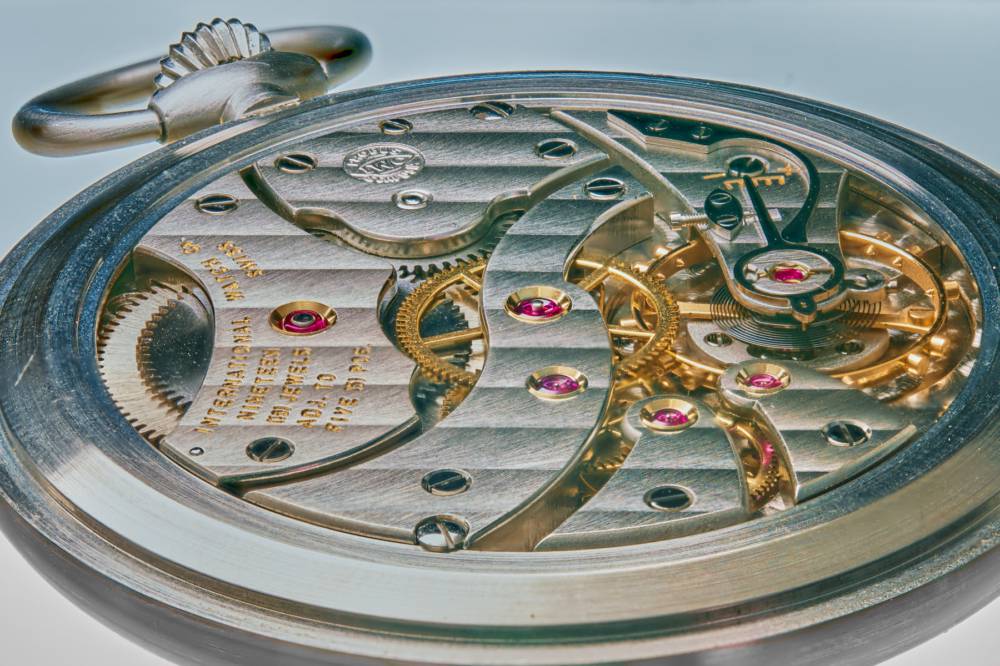
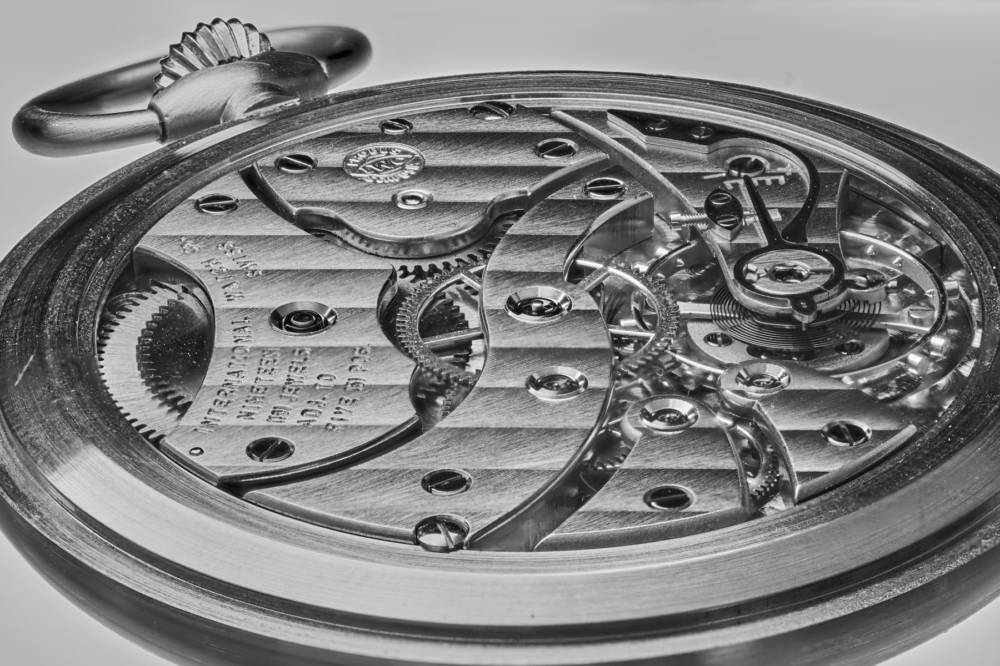
I think some motifs look more technical in black and white .......


Beautiful images. I think I prefer the color version here, love how the jewels
and gold wheels contrast with the bridges.
Yes Ben, we are conditioned to color images.
Without colors, the view becomes more abstract and the technical details are
not overlaid with color.
Some close ups.

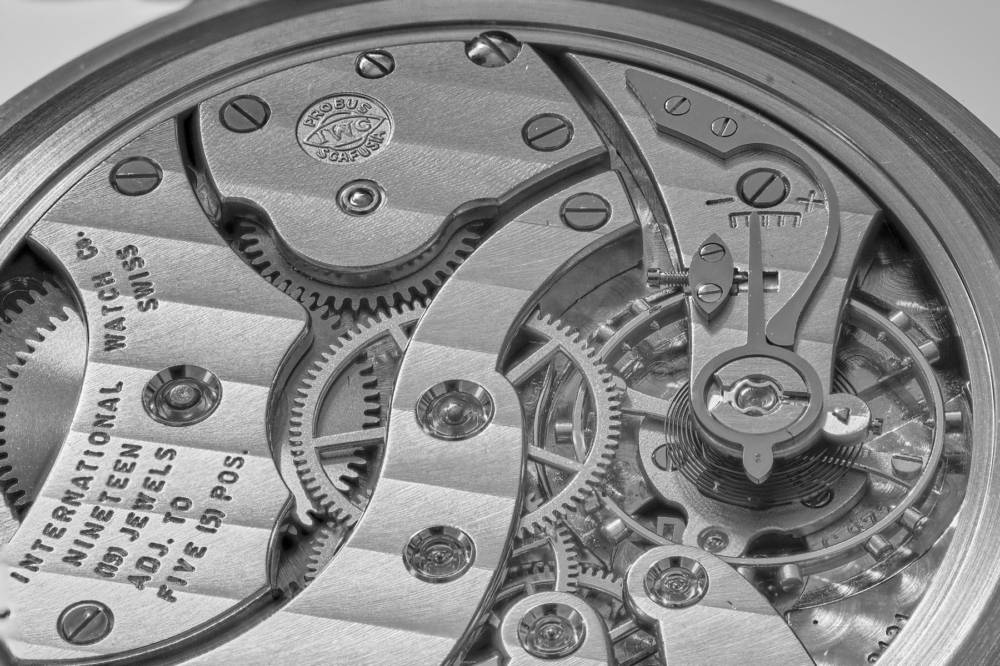
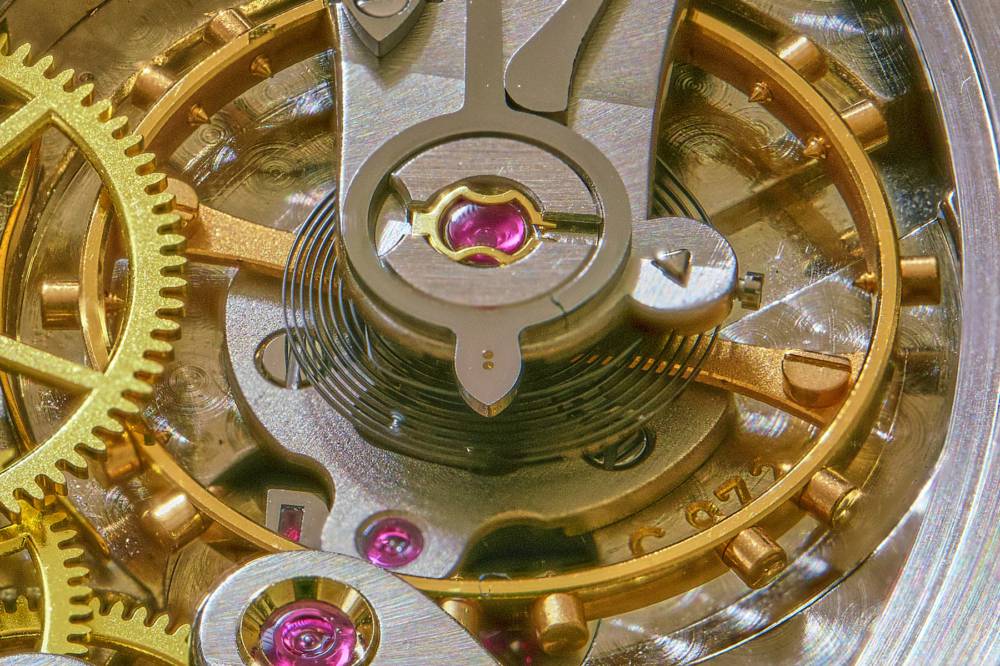
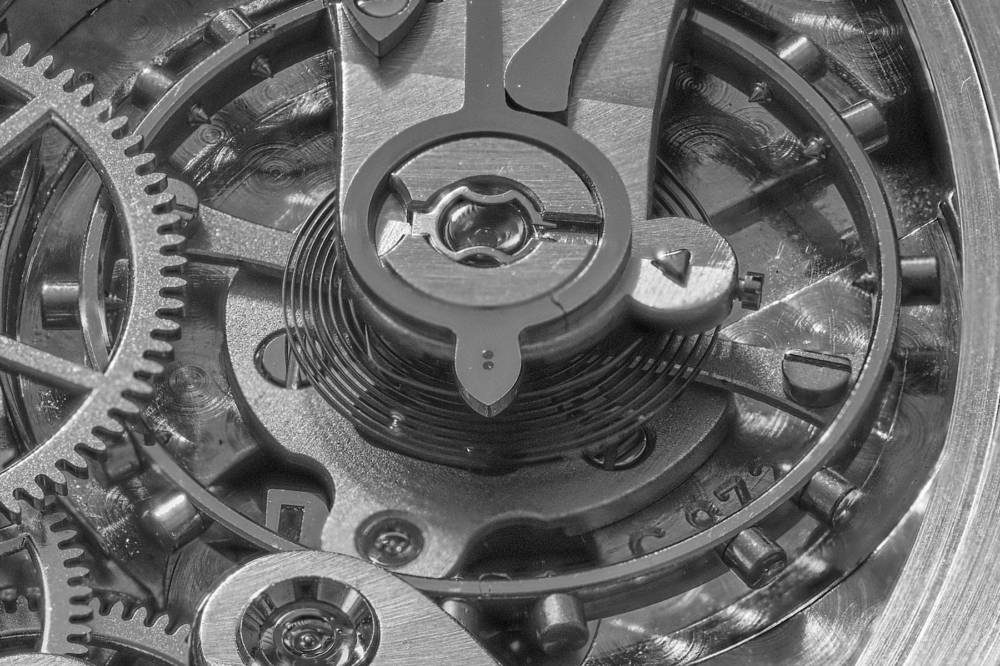
Hi Hebe,
that photos are just awesome. The colored looks of coures more natuarl, while
the b/w has a really technical touch. What kind of witchcraft is involved to
shoot pictures like this ?
You seem to have a gifted watchmaker, or the watch has never ben touched. The
screw heads look immaculate.
br
cromagnonman
@ cromagnonman
You are right, this ref. 5301 ist like NOS, including papers, box and chain.
So, this perfect watch is worth some effort to document the shape by photos.
The "witchcraft" is a Focus Stacking Tool.
I used 25 manual focussed photos for the first photo and 13 manual focussed
photos for the second photo.
Taken by a full frame camera with 42 Mega Pixel (Sony A7RII) and a manual 2:1
APO Tele Lens (LAOWA 2.8/100). Photography is like gambling with light. The
light is the most significant parameter.
The size of the resulting master photo is huge. 6900 horizontal Pixels and
4600 vertical Pixels. Tha data content of the B/W variant is 6.4 Megabyte. So,
I downsized all photos to 1800 x 1200 Pixel. All detail photos are crops from
the master photos.
I use the Affinity Photo Focus Stacking Tool.
I have put a downsized master photo with 4096 x 2731 Pixel onto my server. It
has only 2.2 Megabyte. This is the link:
derjonk.de/lizard/5301-13stack-4096px.jpg
And some examples with this lens of my preferred usual dynamic motifs.


For a very long time we had 2 reference books, one published by Reinard Meis,
the other by Tolke and King.
During the last 15 years, 2 wonderful extensive documents were added : the PhD
thesis of David Seyffer ( unfotunately only in German language) and the
'Jones' book by Thomas Koenig, Alan Myers and David Seyffer. The 'Jones' book
covered the Jones period ( 1868-1876), the current book the period 1875-1890.
Both periods had been poorly documented because the lack of early sales
records and other vital documentation in the archives. Now we can be sure of
many details which could not be retrieved from the incomplete archives, before
1885. A huge enterprise undertaken by the best IWC historians we have, brought
to us a treasure of information on IWC's early history. Well done authors!
Regards,
Adrian
(alwaysiwc)..
Oops
Wrong thread for my post.
Adrian.